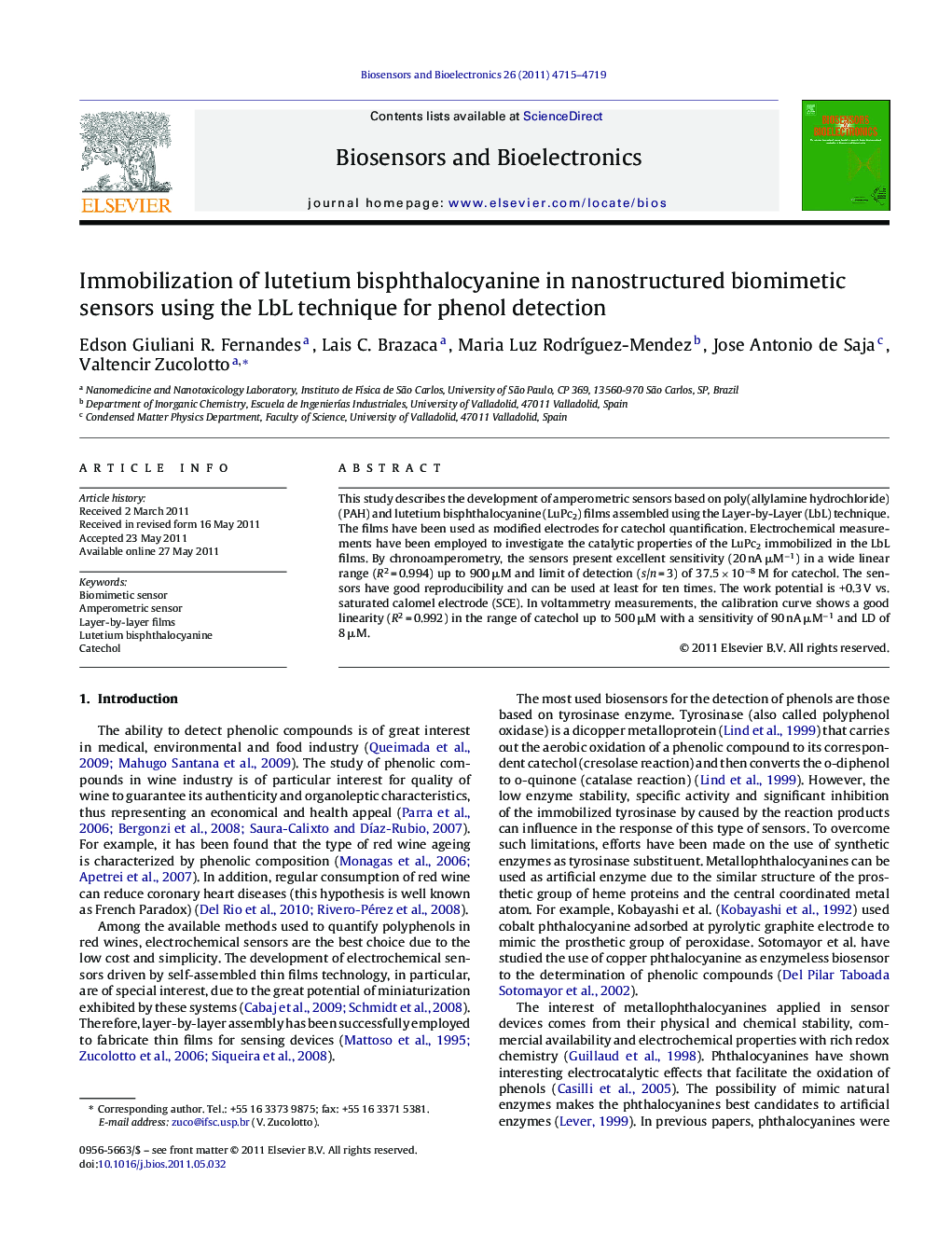| Article ID | Journal | Published Year | Pages | File Type |
|---|---|---|---|---|
| 867986 | Biosensors and Bioelectronics | 2011 | 5 Pages |
This study describes the development of amperometric sensors based on poly(allylamine hydrochloride) (PAH) and lutetium bisphthalocyanine (LuPc2) films assembled using the Layer-by-Layer (LbL) technique. The films have been used as modified electrodes for catechol quantification. Electrochemical measurements have been employed to investigate the catalytic properties of the LuPc2 immobilized in the LbL films. By chronoamperometry, the sensors present excellent sensitivity (20 nA μM−1) in a wide linear range (R2 = 0.994) up to 900 μM and limit of detection (s/n = 3) of 37.5 × 10−8 M for catechol. The sensors have good reproducibility and can be used at least for ten times. The work potential is +0.3 V vs. saturated calomel electrode (SCE). In voltammetry measurements, the calibration curve shows a good linearity (R2 = 0.992) in the range of catechol up to 500 μM with a sensitivity of 90 nA μM−1 and LD of 8 μM.
► Nanostructurated enzymeless biosensor for phenol detection in wine industry. ► Lutetium bisphthalocyanine as synthetic enzyme. ► The use of LbL technique for detection of phenolic compounds. ► Real-time detection in real samples.
